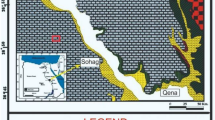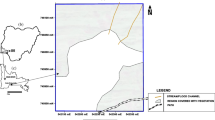Abstract
In foundation survey projects for hotel buildings in Kentucky, assisted by drilling data, an integrated geophysical survey was undertaken. The main goal of the project was to investigate the depth of the top rock and the void locations, if any present. The project used shallow non-invasive geophysical survey methods, including electrical resistivity tomography (ERT) and multi-channel analysis of surface wave (MASW). A shallow subsurface survey was performed using the MASW equipped with a 24-geophone array, equipped with 4.5 Hz geophones to estimate the clay/soil thickness. The 22 2-d ERT profiles for imaging resistivity changes in subterranean formations were used to survey the top rock and delineate possible karst areas in the area. These methods successfully reflect the top of the rock at an average depth of about 60 ft. Additionally, several relatively large karst feature zones in the study area were mapped with the use of the ERT data. Finally, the 2-d ERT profiles were used to study the geological properties of the foundation structure. Using the established geophysical model, the internal structure of the foundation was revealed. The results are in good agreement with the actual situation in the study area as evinced by available borehole data, and can guide engineers when solving foundation problems and reveal the weakness of the karst lava development area that may appear under a foundation during its construction.

















Similar content being viewed by others
References
Adeoti L, Ojo AO, Adegbola RB, Fasakin OO (2016) Geoelectric assessment as an aid to geotechnical investigation at a proposed residential development site in Ilubirin, Lagos, Southwestern Nigeria. Arabian J Geosci 9(5):338
Afshar A, Abedi M, Norouzi G-H, Riahi M-A (2015) Geophysical investigation of underground water content zones using electrical resistivity tomography and ground penetrating radar: a case study in Hesarak-Karaj, Iran. Eng Geol 196:183–193
Anderson ND, Croxton N, Hoover R, Sirles PC, National Research Council BE. Transportation Research, Classification of Earth Materials C and Transportation Research Board Online C (2008) Geophysical methods commonly employed for geotechnical site characterization. Washington, DC
Butchibabu B, Sandeep N, Sivaram YV, Jha PC, Khan PK (2017) Bridge pier foundation evaluation using cross-hole seismic tomographic imaging. J Appl Geophys 144:104–114
de Lucena RF, Taioli F (2014) Rayleigh wave modeling: a study of dispersion curve sensitivity and methodology for calculating an initial model to be included in an inversion algorithm. J Appl Geophys 108:140–151
Fabien-Ouellet G, Fortier R (2014) Using all seismic arrivals in shallow seismic investigations. J Appl Geophys 103:31–42
Gaël D, Tanguy R, Nicolas M, Frédéric N (2017) Assessment of multiple geophysical techniques for the characterization of municipal waste deposit sites. J Appl Geophys 145:74–83
Lin S, Ashlock JC (2016) Surface-wave testing of soil sites using multichannel simulation with one-receiver. Soil Dyn Earthq Eng 87:82–92
Lontsi AM, Ohrnberger M, Krüger F (2016) Shear wave velocity profile estimation by integrated analysis of active and passive seismic data from small aperture arrays. J Appl Geophys 130:37–52
Lu Z, Wilson GV (2017) Imaging a soil fragipan using a high-frequency multi-channel analysis of surface wave method. J Appl Geophys 143:1–8
Pegah E, Liu H (2016) Application of near-surface seismic refraction tomography and multichannel analysis of surface waves for geotechnical site characterizations: a case study. Eng Geol 208:100–113
Rahman MZ, Siddiqua S, Kamal ASMM (2016) Shear wave velocity estimation of the near-surface materials of Chittagong City, Bangladesh for seismic site characterization. J Appl Geophys 134:210–225
Roy N, Jakka RS (2017) Near-field effects on site characterization using MASW technique. Soil Dyn Earthq Eng 97:289–303
Shaaban F, Ismail A, Massoud U, Mesbah H, Lethy A, Abbas AM (2013) Geotechnical assessment of ground conditions around a tilted building in Cairo-Egypt using geophysical approaches. J Assoc Arab Univ Basic Appl Sci 13(1):63–72
Soupios PM, Georgakopoulos P, Papadopoulos N, Saltas V, Andreadakis A, Vallianatos F, Sarris A, Makris JP (2007) Use of engineering geophysics to investigate a site for a building foundation. J Geophys Eng 4(1):94–103
Strelec S, Mesec J, Grabar K, Jug J (2017) Implementation of in situ and geophysical investigation methods (ERT & MASW) with the purpose to determine 2D profile of landslide. Acta Montanistica Slovaca 22(4):345–358
Tallavó F, Cascante G, Pandey M (2009) Experimental and numerical analysis of MASW tests for detection of buried timber trestles. Soil Dyn Earthq Eng 29(1):91–102
Vargemezis G, Tsourlos P, Giannopoulos A, Trilyrakis P (2015) 3D electrical resistivity tomography technique for the investigation of a construction and demolition waste landfill site. Stud Geophys Geod 59(3):461–476
Varnavina AV, Khamzin AK, Kidanu ST, Anderson NL (2019) Geophysical site assessment in karst terrain: a case study from southwestern Missouri. J Appl Geophys 170:103838
Wang L, Xu Y, Luo Y (2015) Numerical Investigation of 3D multichannel analysis of surface wave method. J Appl Geophys 119:156–169
Watabe Y, Sassa S (2008) Application of MASW technology to identification of tidal flat stratigraphy and its geoenvironmental interpretation. Mar Geol 252(3–4):79–88
Acknowledgements
This work was supported by the National Key R&D Programme of China (Grant no. 2017YFC0602905) and a CSC scholarship.
Author information
Authors and Affiliations
Corresponding author
Additional information
Publisher's Note
Springer Nature remains neutral with regard to jurisdictional claims in published maps and institutional affiliations.
Rights and permissions
About this article
Cite this article
Wang, Y., Anderson, N. & Torgashov, E. Condition Assessment of Building Foundation in Karst Terrain Using both Electrical Resistivity Tomography and Multi-channel Analysis Surface Wave Techniques. Geotech Geol Eng 38, 1839–1855 (2020). https://doi.org/10.1007/s10706-019-01133-3
Received:
Accepted:
Published:
Issue Date:
DOI: https://doi.org/10.1007/s10706-019-01133-3




